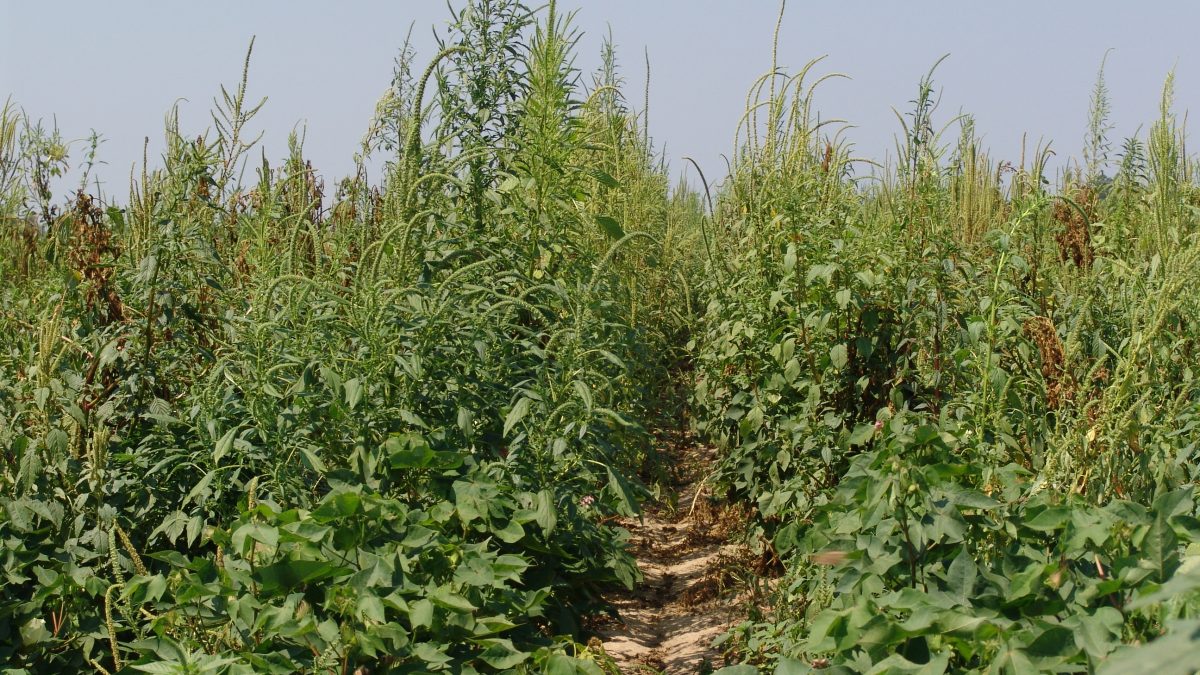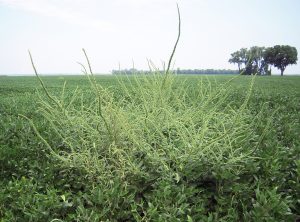Palmer Amaranth: PULL. BAG. BURN. And BURY.

Palmer amaranth. Every year it continues to spread. North Dakota now lists 14 counties with PA, and additional counties were documented with active populations last year. South Dakota and Minnesota have both named Palmer Amaranth as a prohibited noxious weed as the number of documented cases has increased.
Single plants produce a million seeds or more, each able to survive for several years in the seedbed. Prone to herbicide resistance and widely adaptable, Palmer amaranth could be the most significant single weed threat in agriculture.
You will want to pay attention to this member of the pigweed family as it is costly to combat and even more expensive to leave unchecked.

Palmer Amaranth (NDSU Photos)
The Spread of Palmer Amaranth
Palmer amaranth is most commonly introduced into new fields in three ways.
Manure The number of viable seeds in manure can be reduced through manure composting. But with a million seeds per plant, all it takes is a single surviving seed to cause a severe infestation. Be conscientious of where cattle feed is from when spreading manure.
On Equipment Like Soybean Cyst Nematode, PA can be introduced on used or dirty equipment. Because PA seeds are a mere millimeter in size, they can easily hitch a ride in a nook or cranny no matter how well you clean your machinery.
As an example, PA was discovered near a field entrance in southeast North Dakota. Not by coincidence, the palmer patches were located in the same spot where combines were parked overnight. The extra shaking of machinery starting up must have dislodged the seeds from where they were hiding. It is believed the seeds hitched a ride from Ohio, where the combine was purchased. When buying used equipment or utilizing custom combine crews, find out where the equipment has been previously used and closely monitor the fields where it is utilized.
Contaminated Seed Millet, CRP seed mixes, and cover crop mixes have a rough PA contamination history. Unfortunately, this is hard to catch until the seed is in the ground. Be sure to only buy seed from reputable sources and watch for and reject any seed lots with “pigweed” or “amaranth” as a weed component. PA seed can only be distinguished from other pigweed through genetic testing.

Weeds are distinguished by spiny bracts on the female plants, smooth hairless stems, long petioles and symmetrical leaf arrangements.
Photo: (Superior Ag Resources photo/Tom Sinnot)
The Cost
Palmer amaranth carries a laundry list of herbicide resistances. Many farms report herbicide costs per acre nearly doubling after the introduction of PA. On top of this, a broad germination period and small herbicide window mean multiple passes for one species – post applications must be applied while the plant is less than 3” tall to be effective.
The weed is highly competitive, taking advantage of the slightest gaps in crop canopy to cause significant yield loss, up to a whopping 91% in corn and 79% in beans. While initial infestations might not be this dramatic, they will still affect your bottom dollar.
If you suspect you have Palmer amaranth in your field, contact your local county extension agent and follow these steps:
- Mark/flag the location for future monitoring.
- Take photos. Quality matters. Separate, up-close pictures of leaves, stems, and flowers aid identification.
- Mix your chemistries. Multiple modes of action, strong residuals, and a strong premix are good tools in your spray tank.
- Narrow up your rows. PA is opportunistic and will take advantage of any gaps in the canopy.
- Do not rely on herbicide control alone. Scout for escapes, and don’t be afraid to get out and hand pull any weeds.
- PULL, BAG, BURN, and BURY. Bag the plant to prevent accidental seed spread. Burn to destroy as many seeds as possible. Bury remnants to keep surviving seeds from germinating.
- Monitor the area for the next few years. Seed can survive for several years and can germinate throughout the growing season.
- DO NOT harvest PA patches discovered in the fall. As mentioned earlier, Palmer can spread easily on equipment. Hand pull, bag, burn, and bury.
Need help with identification? Check out NDSU’s page on Palmer Amaranth, and if in doubt, call an extension agent or reach out to our agronomy team.
For more resources, check out these links:



